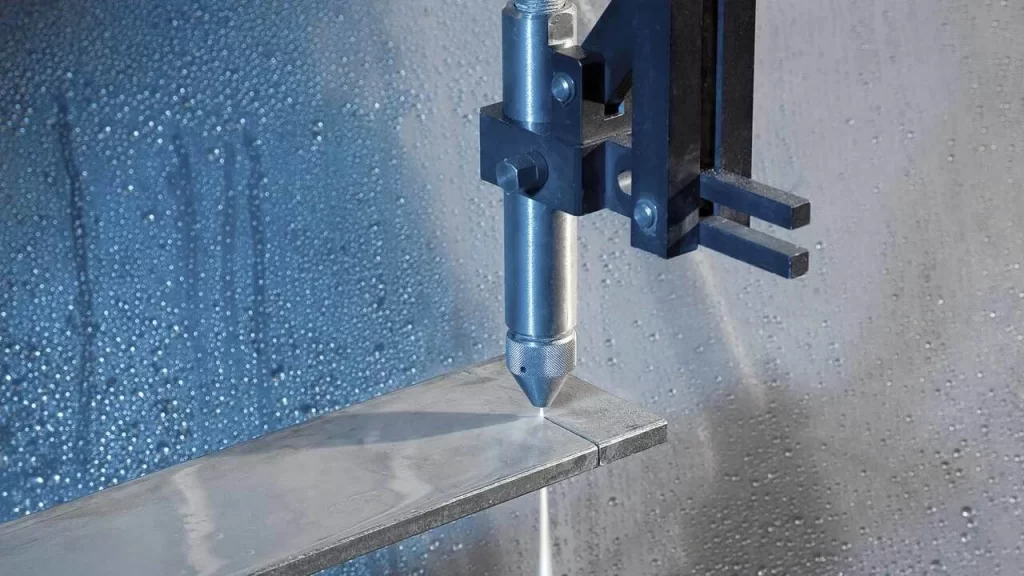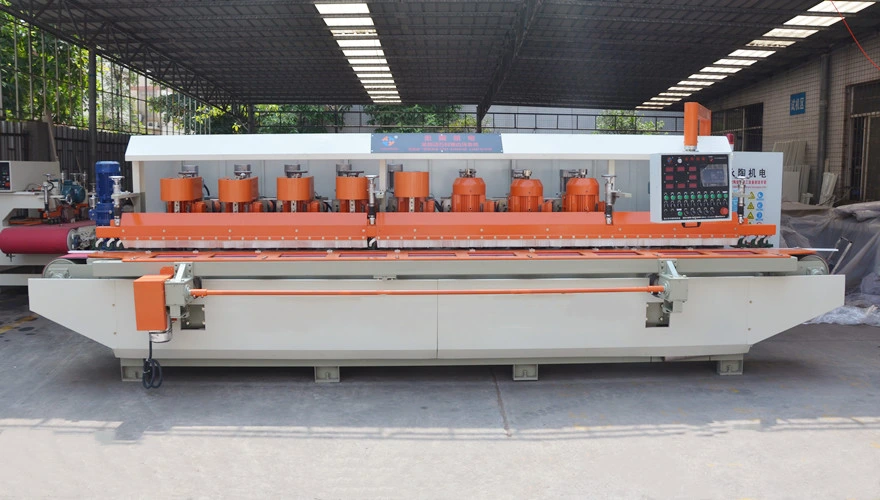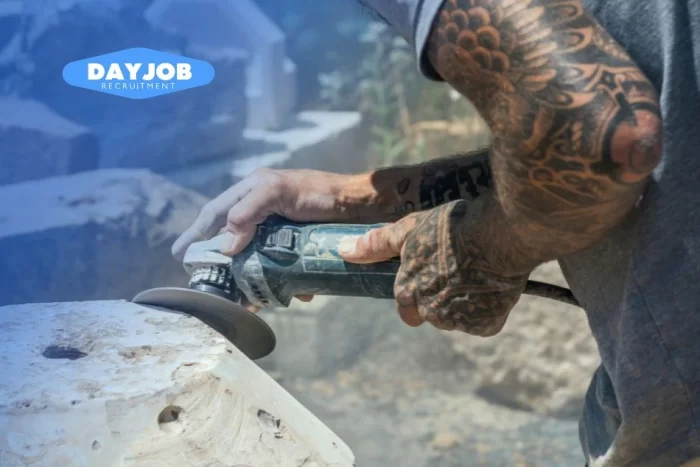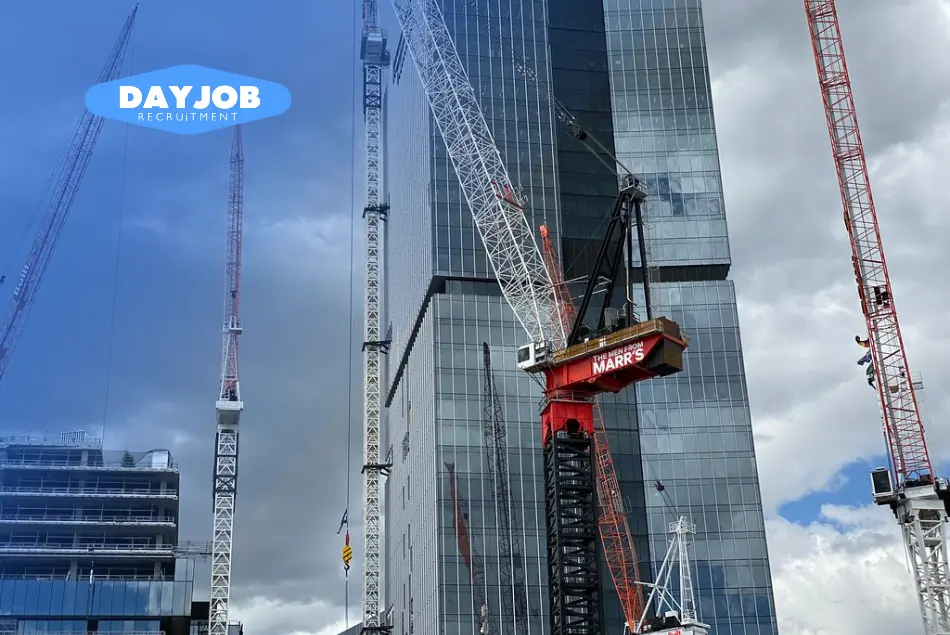The stonemasonry industry in Australia, renowned for its rich tradition and innovative approaches, continuously evolves with the integration of advanced stone machinery and technology. With a diverse range of applications spanning quarrying, construction, interior design, and decorative arts, these tools not only cater to the varied needs of Australian stonemasons but also reflect the industry’s commitment to quality, precision, and sustainability.
This guide aims to provide valuable insights into how these machines support the intricate and demanding tasks of stonemasons in Australia, underlining their significance in maintaining the country’s reputation for excellence in stone craftsmanship.
1. CNC Water Jet

Image Source: All3DP
A CNC water jet is an industrial tool capable of cutting a variety of materials using a high-pressure jet of water or a mix of water and abrasive substances. It’s designed for precision cutting of materials like metal, stone, or glass.
Use: It cuts materials without altering their intrinsic structure, thanks to its no-heat cutting process, making it suitable for detailed and intricate work.
Stonemason Type: Used by stonemasons specializing in precision and detailed cutting.
Industry: Utilized in diverse industries including mining, aerospace, and even culinary preparation.
2. Bridge Saw
Image Source: mmgservice.it
The Bridge Saw is a large tool used for cutting natural stones like marble and granite, characterized by a bridge-like arm that holds the diamond blade.
Use: It ensures powerful and accurate cuts, essential for handling expensive materials where precision is paramount.
Stonemason Type: Suitable for stonemasons working with large stone blocks, typically in construction or interior design.
Industry: Mainly used in construction and interior design, especially for custom stonework.
3. Angle Grinder
Image Source: bobvila.com
An angle grinder is a handheld power tool consisting of a motor, a gear reduction system, and an abrasive disc for cutting, grinding, and polishing a variety of materials.
Use: Used for cutting roof tiles, pavement slabs, bricks, and other stone materials. The tool can perform “dry cutting,” which is less messy and time-intensive compared to “wet cutting” methods in masonry
Stonemason Type: Their ability to quickly cut through stone makes them suitable for various stonemasonry tasks, accommodating the needs of both traditional and modern stonemasons
Industry: Commonly used in the construction and metalworking industry for cutting stone, metal, and other building materials.
4. Polishing Machines
Image Source: m.indiamart.com
Polishing machines are used to polish stone surfaces to achieve a smooth, glossy finish.
Use: Ideal for creating rounded shapes and polished finishes on stone countertops and stair tops.
Stonemason Type: Used by masons focused on detailing and finishing work.
Industry: Predominantly used in construction and interior design for countertops, flooring, and decorative stonework.
5. CNC Routers
Image Source: indiamart.com
CNC routers are automated machines designed for detailed carving and engraving on various stones.
Use: Capable of handling complex tasks like three-dimensional relief, intricate carving, line carving, chamfering, and drilling.
Stonemason Type: Suitable for artisans and craftspeople in stonemasonry who require intricate, detailed work.
Industry: Used in the stone industry, stone processing, art relief, and decoration sectors.
6. Wire Saws

Image Source: lantoom.co.uk
Wire saws are advanced cutting tools capable of intricately shaping large stone blocks, even up to 13 tons. They can cut curves and complex interlocking shapes with high precision.
Use: These saws are used for quarrying and cutting very large stone blocks with minimal wastage and noise.
Stonemason Type: Primarily used by stonemasons who specialize in quarrying and large-scale stone shaping.
Industry: Mainly employed in the quarrying industry for extracting and initial shaping of large stone blocks.
7. Edge Profiling Machines

Image Source: chinayongtao.com
Generally, edge profiling machines are designed to create various edge profiles on stone slabs.
Use: Used for shaping and finishing the edges of stone slabs with specific profiles like rounded or beveled edges.
Stonemason Type: Utilized by Stonemasons specializing in stone slab fabrication and finishing.
Industry: Predominantly found in the stone fabrication industry.
8. Stone Splitters
Image Source: turn-again.com
Stone splitters are robust machines capable of splitting natural and cast stone with a force of 40,000 lbs. They feature hardened steel blades and a modular design.
Use: Used for dividing stone blocks or slabs into smaller, manageable pieces.
Stonemason Type: Employed by both commercial and artistic stonemasons for efficient stone splitting.
Industry: Common in both commercial stone production and artistic stone crafting industries.
9. Block Cutters

Image Source: fjhualongm.en.made-in-china.com
Block cutters are essential tools in stonemasonry, generally used for cutting large stone blocks. Some block-cutting machines utilize broad cutting discs, others employ Monolama blades, and yet others make use of unique wire ropes.
Use: Utilized to cut large stone blocks into slabs for further processing or construction use.
Stonemason Type: Used by stonemasons involved in initial stone shaping and preparation.
Industry: Primarily used in the construction and stone preparation industry.
10. Laser Engravers

Image Source: stylecnc.com
Laser engravers are modern engraving tools using CO2 lasers, ideal for precise, contactless engraving on stone surfaces.
Use: Employed for detailed engraving work on stones, capable of handling complex designs with high accuracy and minimal waste.
Stonemason Type: Used by stonemasons specializing in detailed and artistic stone engraving.
Industry: Widely used in various industries for decorative and artistic stone works.
Summary of Stone Cutting and Carving Machines
Here is a tabulated summary of the specifications found in every machine utilized by stonemasons:
| Machines | Use | Stonemason Type | Industry |
| CNC Water Jet | Cuts materials without altering structure; for detailed work | Precision and detailed cutting specialists | Mining, aerospace, culinary preparation |
| Bridge Saw | Powerful, accurate cuts in natural stones | Large stone block handling; construction/design | Construction, interior design |
| Angle Grinder | Versatile and portable for dry cutting | Stonemason professionals | Construction and Metalwork industry |
| Polishing Machines | Polishing stone surfaces for smooth finish | Detailing and finishing work | Construction, interior design |
| CNC Routers | Detailed carving and engraving on stones | Artisans and craftspeople | Stone industry, art relief, decoration |
| Wire Saws | Quarrying and cutting large stone blocks | Quarrying and large-scale stone shaping | Quarrying industry |
| Edge Profiling Machines | Shaping and finishing stone slab edges | Stone slab fabrication and finishing | Stone fabrication industry |
| Stone Splitters | Splitting stone blocks into smaller pieces | Commercial and artistic stonemasonry | Commercial and artistic stone crafting |
| Block Cutters | Cutting large stone blocks into slabs | Initial stone shaping and preparation | Construction, stone preparation |
| Laser Engravers | Detailed engraving work on stone surfaces | Detailed and artistic stone engraving | Various industries, decorative arts |
Are you a job seeker looking for your next big opportunity? Click below to see how we can assist you in finding the perfect role.
Conclusion
The role of specialized machinery cannot be overstated in the diverse field of stonemasonry. Each machine, from CNC Water Jets to Laser Engravers, serves a specific purpose, catering to different aspects of stonemasonry work. These tools not only enhance the efficiency and precision of the stonemasons but also open up new possibilities in terms of design and creativity. The integration of such technology is crucial in maintaining the high standards of craftsmanship expected in the stonemasonry industry.
At DayJobs Recruitment, we understand the intricate requirements of the stonemasonry industry in Australia. We specialize in connecting jobseekers with companies that not only offer quality services but also provide the right equipment and environment to harness their skills effectively. Whether you’re a seasoned stonemason or new to the field, we can help you find the right fit where your talents will be valued and nurtured.
If you’re looking for your next opportunity in stonemasonry, reach out to us, and let’s find the perfect match for your skills and aspirations.
Is this the role you’ve been waiting for?
FAQs
Can CNC Routers also be used on materials other than stone?
Yes, CNC Routers are versatile machines that can work on various materials including wood, plastics, and metals, in addition to stone. They are particularly popular in industries that require precise and intricate detailing.
What key environmental considerations do stonemasons need to keep in mind?
The key environmental consideration when using stone cutting and carving machines is the management of dust and particulate matter emissions. This aspect is critical due to several reasons:
Health Impact
Stone dust, particularly silica dust, is a significant health hazard. Inhaling fine dust particles can lead to respiratory issues, including silicosis, a chronic disease that can be debilitating or even fatal.
Air Quality
Stone dust contributes to air pollution, which can have broader environmental impacts. Poor air quality can affect wildlife, plant life, and ecosystems, and can also contribute to issues like smog and poor visibility.
Water Pollution
If not properly managed, stone dust and particles can enter water systems through runoff, leading to water pollution. This can harm aquatic life and affect water quality for both human use and environmental ecosystems.
Given these impacts, it is essential for operations involving stone cutting and carving to implement effective dust management strategies. This can include:
Dust Suppression Systems
Using water spray systems to minimize airborne dust during cutting and carving.
Ventilation and Filtration
Implementing proper ventilation in work areas and using filtration systems to capture airborne particles.
Protective Equipment
Providing workers with appropriate personal protective equipment (PPE), such as respirators and masks.
Waste Management
Proper disposal or recycling of stone dust and waste to prevent environmental contamination.
Monitoring and Compliance
Regular monitoring of dust levels and adherence to environmental and occupational health regulations.
How often do the blades in stone-cutting machinery need to be replaced?
The frequency of blade replacement in stone-cutting machinery varies depending on the type of stone being cut, the intensity of use, and the quality of the blades. Generally, blades cutting harder materials like granite need more frequent replacement than those cutting softer stones.
What safety measures are essential when operating heavy stone machinery?
Key safety measures include wearing protective gear (like gloves, goggles, and ear protection), ensuring proper machine maintenance, adhering to operational guidelines, and having sufficient training in machinery use.
How has the advent of digital technology impacted traditional stonemasonry techniques?
Digital technology, like CNC machinery and laser engravers, has revolutionized traditional stonemasonry, allowing for greater precision, efficiency, and the ability to execute complex designs that were challenging or impossible with traditional techniques.
Do you know the perfect candidate for the job? Refer and start earning today!








